Taebaek Guwau Village (Alpine Botanical Garden) (태백 구와우마을(고원자생식물원))
14.4Km 2021-05-14
38-33, Guwau-gil, Taebaek-si, Gangwon-do
+82-33-553-9707
Guwau Village is located below Pijae Hill (also called Samsuryeong) at the entrance to Maebongsan Mountain. The village got its name because its topography resembles the scenery of nine cows peacefully lying around. The Alpine Botanical Garden is located 800-900 meters above sea level and protects the endangered alpine plant species from disappearing.
The botanical garden also offers visitors an opportunity to conveniently observe some rare flowers and plants. In August, when the sunflowers are in full bloom, the Taebaek Sunflower Festival is held at Guwau Village. In addition to celebrating the area’s wide array of colorful flowers, the festival also has a variety of attractions such as a drawing exhibition, a photo exhibition, and an environmental sculpture exhibition using repurposed materials.
Dutasan Mountain (두타산)
15.0Km 2021-04-05
533, Samhwa-ro, Donghae-si, Gangwon-do & Samcheok-si, Jeongseon-gun
+82-33-534-7306
Standing at 1,357 meters above sea level, Dutasan Mountain is surrounded by famous natural landmarks: Mureunggyegok Valley to the north, Gocheongyegok Valley to the east, Taebaeksan Mountain range to the south, and Jungbongsan Mountain to the west. Moreover, situated along the 3.1 kilometer-long valley connecting Dutasan and Samhwasa Temple are such tourist attractions as Dutasanseong Fortress, Geumnamjeong Pavilion, Yongchupokpo Falls, Ssangpokpo Falls, Osipcheon Stream, and Cheoneunsa Temple.
Gangwon Yongchupokpo Falls (무릉계곡 용추폭포(강원))
15.0Km 2022-10-20
538, Samhwa-ro, Donghae-si, Gangwon-do
+82-33-534-7306
Located approximately 2.5 kilometers west of Samhwasa Temple, the entrance of Mureunggyegok Valley, Yongchupokpo Falls is a three-tiered waterfall in a shape of a pot that gets its waters from Cheongoksan Mountain (1,403.7 meters). Located 70 meters below Yongchupokpo Falls is Ssangpokpo Falls, where the water from Yongchupokpo Falls and Bakdalgyegok Valley meets to create a deep and beautiful base.
Mureunggyegok Valley Healing Campground (무릉계곡 힐링캠핑장)
15.0Km 2024-03-19
467 Samhwa-ro, Donghae-si, Gangwon-do
This campground is situated in Mureunggyegok Valley, nestled between Dutasan Mountain and Cheongoksan Mountain. The valley is renowned for its enigmatic rock formations and derives its name from the mythical paradise in the Chinese fable, “The Peach Blossom Land”. It's a place where one can immerse in the beauty of nature. The campground is accessible by car, just a 25-minute drive from KTX Mukho Station.
Donghae Mureung Health Forest (동해무릉건강숲)
15.1Km 2025-10-23
455 Samhwa-ro, Donghae-si, Gangwon-do
+82-33-530-2391
Situated at the entrance of Mureung Valley, this environmental disease prevention and management center is directly run by Donghae city. Environmental diseases are those that develop due to environmental factors, such as atopic dermatitis, asthma, and allergic rhinitis. This center, spanning approx. 24,000 square meters, consists of an eco-friendly healing lodging, a themed experience center, a health consultation room, a thermal therapy room, and a natural health food restaurant. The accommodation facility, built with eco-friendly materials such as red clay and Hinoki cypress, offers healthy accommodations as well.
The themed experience center is a jjimjilbang (Korean sauna) created using natural materials, such as stones, soil, and salt. The White Sericite Room emits far-infrared rays and natural anions; the Red Clay Room is good for detoxification; and the Salt Cave's nano salt particles help cleanse one's respiratory system. These sauna rooms aid in improving environmental disease symptoms. The thermal therapy room features heated capsule-like beds that promote blood circulation. In addition, a resident nurse provides free health consultations based on visitors' basic examination results. You can participate in various programs without staying overnight, such as handcrafting using eco-friendly materials, themed experiences, health consultations, and a natural health food experience. In summer, don't forget to visit Oseonnyeotang, a nature-friendly bath filled with water from Mureung Valley.
Samcheok Culture & Art Center (삼척문화예술회관)
15.9Km 2021-07-02
45, Expo-ro, Samcheok-si, Gangwon-do
+82-33-572-1331
Samcheok Culture & Art Center is a cultural complex located in Seongnam-dong, Samcheok-si, Gangwon-do. The center opened its doors to the public on June 4th, 1994 with facilities such as grand/small theaters, outdoor performance stages, exhibition halls and more.
Samcheok Jeongwol Daeboreum Festival (삼척정월대보름제)
15.9Km 2025-02-04
45 Expo-ro, Samcheok-si, Gangwon-do
+82-33-573-2882
Samcheok Jeongwol Daeboreum Festival is a festival that blends gijuldarigi, Samcheok's local game of tug-of-war, with other traditional customs of Jeongwol Daeboreum, the first full moon of the Lunar Year. The festival aims to preserve and develop both national and regional customs and traditions as well as to promote the local economy and provide an opportunity to bring the community together.
Gulttukchon (굴뚝촌)
16.1Km 2024-03-19
253-6 Samhwa-ro, Donghae-si, Gangwon-do
033-534-9199
This restaurant specializes in daenamu tongbap (steamed rice in bamboo tube) and other healthful dishes that exclusively use natural flavorings. The daenamu tongbap, notable for its complex flavor, is prepared with 12 types of grains filled into a bamboo tube before steaming. It is served alongside choices like bulgogi jeongol (bulgogi hot pot), ori jeongol (duck hot pot), and bullak jeongol (bulgogi and octopus hot pot). The menu also features gamja jeon (potato pancake) and ori gui (grilled duck). Additionally, the restaurant boasts a garden that is home to 180 varieties of wildflowers and herbs.
Jukseoru Pavilion (삼척 죽서루)
16.2Km 2025-02-03
37 Jukseoru-gil, Samcheok-si, Gangwon-do
+82-33-570-3670
Jukseoru Pavilion, estimated to have been built around 1266, is one of the eight major attractions of Gwandong District in middle eastern Korea collectively known as Gwandong Palgyeong (eight famous sites). Sitting on the edge of a cliff overlooking Osipcheon Stream, the pavilion incorporates the rocks on the cliff as cornerstones, with a five-girder paljak (ancient-style roof).
Then, there are 26 signboards hanging from the rafters of the pavilion. The signboards contain inscriptions of famous ancient scholars such as 'Jeilgyeongjeong' ('The best riverside pavilion'; 1662) by Heo Mok, 'Jukseoru' and 'Gwandong Jeilru' ('The best pavilion in Gwandong'; 1711) by Yi Seong-jo, and 'Haeseon Yuhui Jiso' ('The place that marine gods enjoy'; 1837) by Yi Gyu-heon. Others who have left their mark include King Sukjong (1674-1720), King Jeongjo (1776-1800) and Yulgok YiYi (1536-1584). Evidently, Jukseoru Pavilion has served as an inspiration since its establishment, and continues to inspire visitors today through the stunning view of its surrounding nature.
Murung Byeolyucheonji (무릉별유천지)
16.3Km 2025-07-18
97 Igi-ro, Donghae-si, Gangwon-do
Mureung Byeolyucheonji was initially a limestone mine that opened in 1968. After 40 years of service as a mine, today it serves as a tourist attraction that boasts beautiful emerald lake and diverse activities. Mureung Byeolyucheonji gets its name from the rock-carved engravings in Mureunggyegok Valley and has the meaning "the place with the best view under the sky, a utopia away from the world." The attraction lives up to its name thanks to the beautiful surrounding mountain scenery pit lakes. Visitors can also enjoy the view from a different angle through diverse rides, such as the Sky Glider, Alpine Coaster, and more.
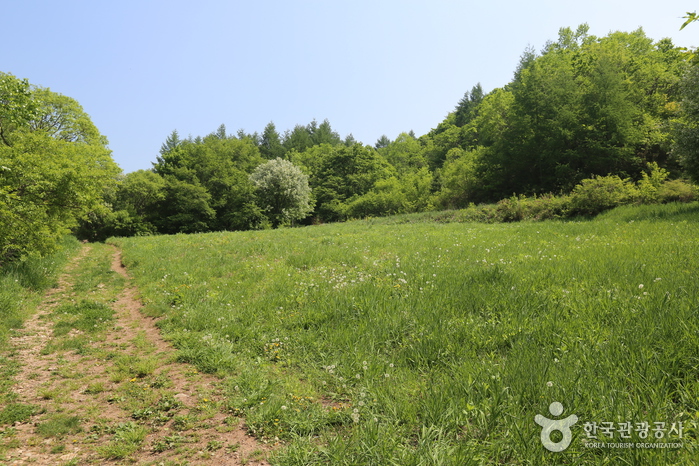
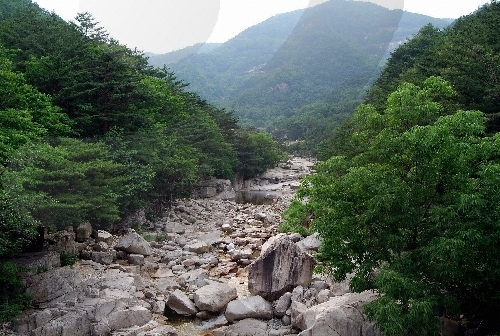
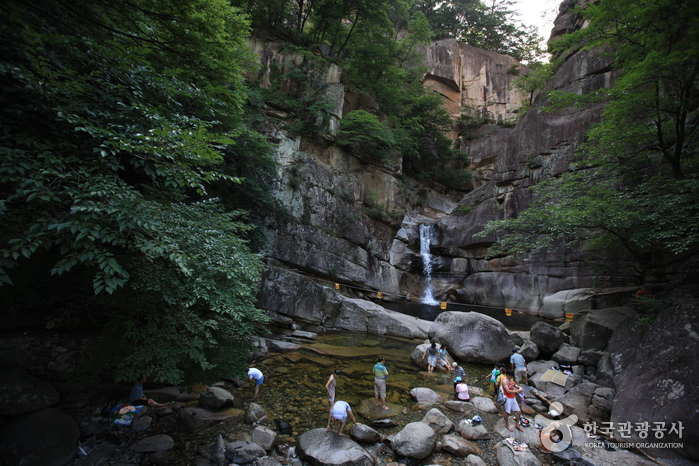
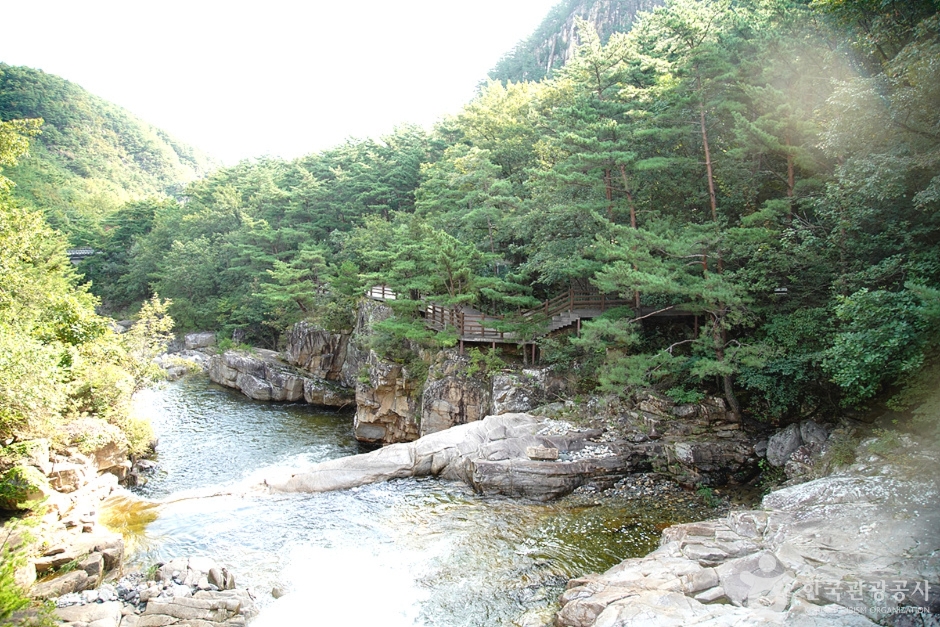
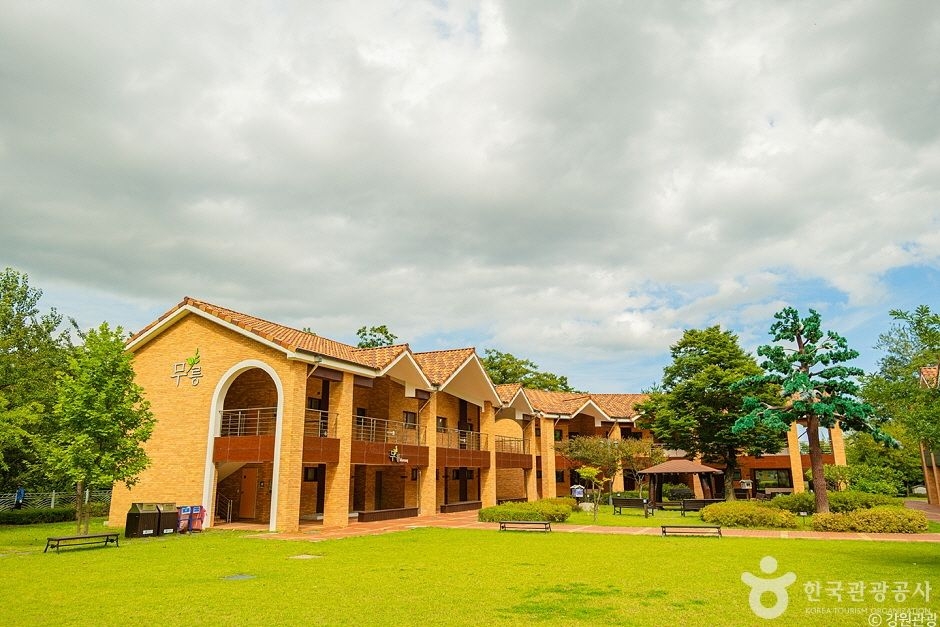
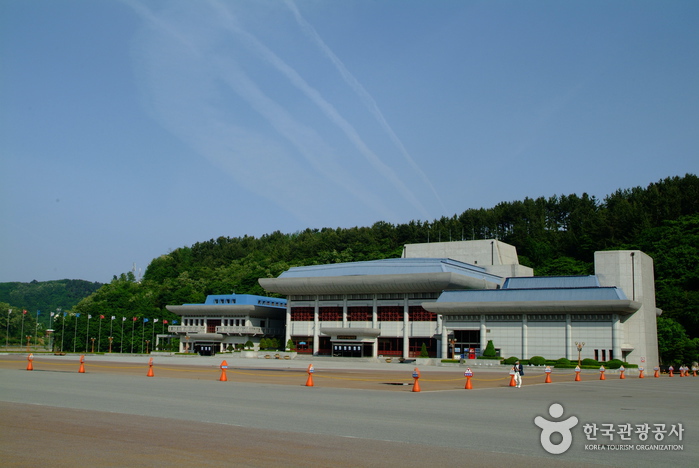
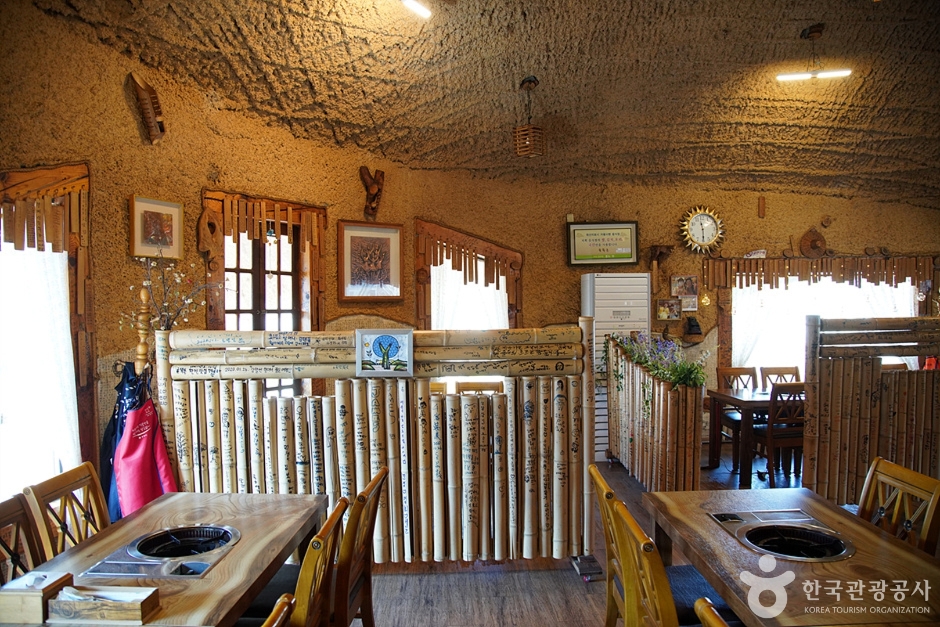
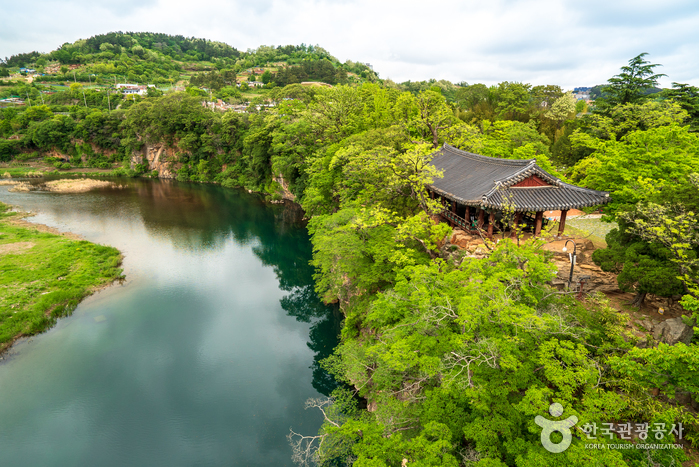
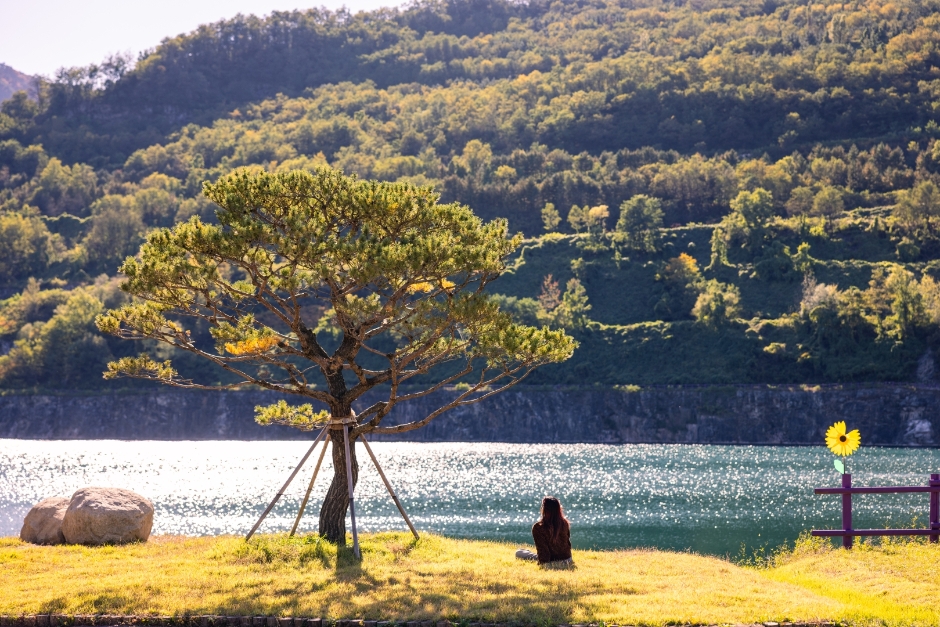
 English
English
 한국어
한국어 日本語
日本語 中文(简体)
中文(简体) Deutsch
Deutsch Français
Français Español
Español Русский
Русский